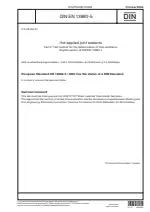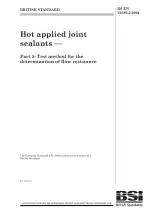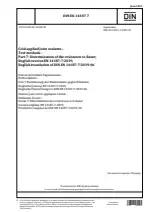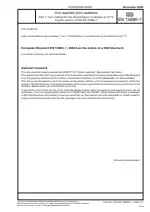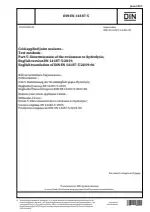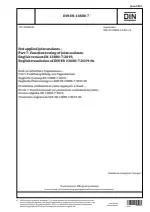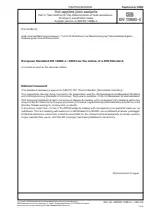DIN EN 13880-5 PDF Download
Standard EN EN DEHot Applied Joint Sealants - Part 5: Test Method for the Determination of Flow Resistance
Also Known As:
DIN EN 13880-5 is a standard that focuses on the test method used for determining the flow resistance of hot applied joint sealants. The document provides guidelines and procedures to assess the ability of these sealants to resist flow under specific conditions. This is an important criterion as flow resistance determines the effectiveness and durability of the joint sealant in maintaining its shape and preventing material displacement over time.
The standard outlines the specific equipment, including molds and heating devices, required to conduct the flow resistance test. It also mentions the importance of selecting appropriate testing temperatures and durations, as these variables can significantly affect the results. The test method involves applying the sealant to a prepared specimen and subjecting it to controlled temperature conditions to simulate real-world conditions.
The results obtained from this test provide relevant information about the performance and quality of the hot applied joint sealant. This data can be used by manufacturers, contractors, and regulatory bodies to determine the suitability of sealants for specific applications. It also aids in comparing different sealant products and selecting the most appropriate one based on its flow resistance capabilities.
| Descriptors | Abilities to flow, Atmospheric influences, Construction, Construction materials, Definitions, Determination, Flow properties, Joint filling, Joint sealings, Length, Penetrations, Road construction, Testing, Testing conditions, Thermal stress |
| ICS Codes | 93.080.20 - Road construction materials |
| Language(s) | English |
| File Size | 378.9 KB |

